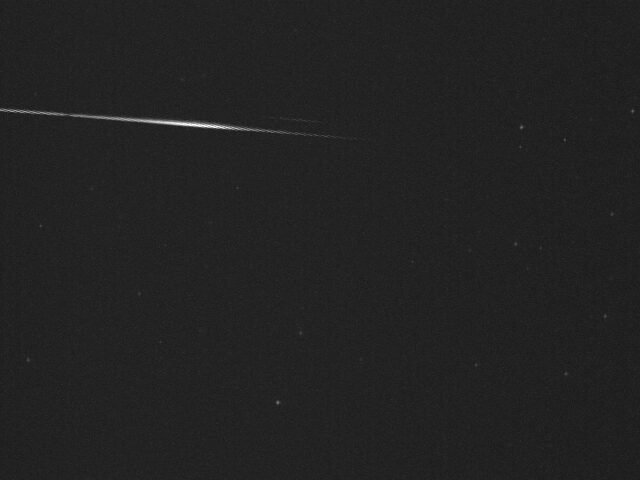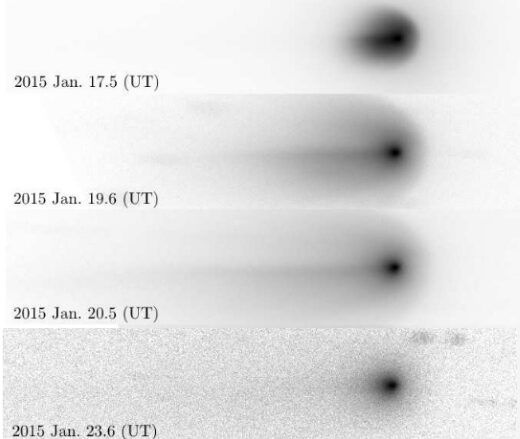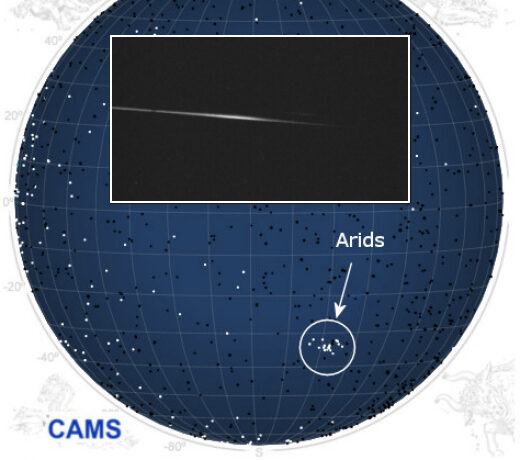
For thousands of years, Comet 15P/Finlay has been dive-bombing Earth's orbit, leaving trails of dust on our planet's doorstep, yet, strangely, there has never been a meteor shower. Until now. On Sept. 27th, Earth hit a stream of debris from Comet Finlay, and a meteor shower was born.
"It is called the Arid meteor shower, because the meteors radiate from the far-southern constellation Ara, the Altar," explains Peter Jenniskens of the SETI Institute, whose meteor cameras in New Zealand and Chile detected the mini-outburst of 13 Arids.
It's long overdue. Every 6 years, Finlay passes only 0.01 au from Earth's orbit. Somehow, we've dodged the debris. "This is the first time we've ever seen meteors from the comet," says Jenniskens.
Comment: Isn't it possible that, up until recently, there were no meteors of significance coming from Comet Finlay?
The shower might not be over. Earth is poised to hit another of Finlay's debris streams, and this one could trigger a storm.
"We predict an encounter sometime between Oct. 6th at 2200 UT and Oct. 7th at 0100 UT," says astronomer Quanzhi Ye of the University of Maryland. "Forecasts range from ~50 to as many as 1100 meteors per hour."
The debris was ejected by the comet in 2014 and 2015. In those years, something unexpected happened. Astronomers watching Finlay dive through the inner Solar System were surprised when the comet erupted--twice--more than quadrupling in brightness and producing massive jets of gas and dust.
Comment: It's becoming quite clear, partly because scientists seem to be in a constant state of surprise these days, but primarily because space objects are behaving increasingly unusual, that something is changing in our solar system, and beyond: Cosmic climate change: Is the cause of all this extreme weather to be found in outer space?

If Earth grazes this material, a meteor storm could occur. Unfortunately for sky watchers, the best place to see it is in Antarctica. However, the timing also favors observers in parts of South America. "Our cameras are well-positioned to record anything that happens," says Jenniskens. So stay tuned.




maybe there are some viruses (virii ? 🤨 🤣 ) riding on Finlay's debris stream - just waiting for the opportunity to stir up the pot even more on our little blue planet.